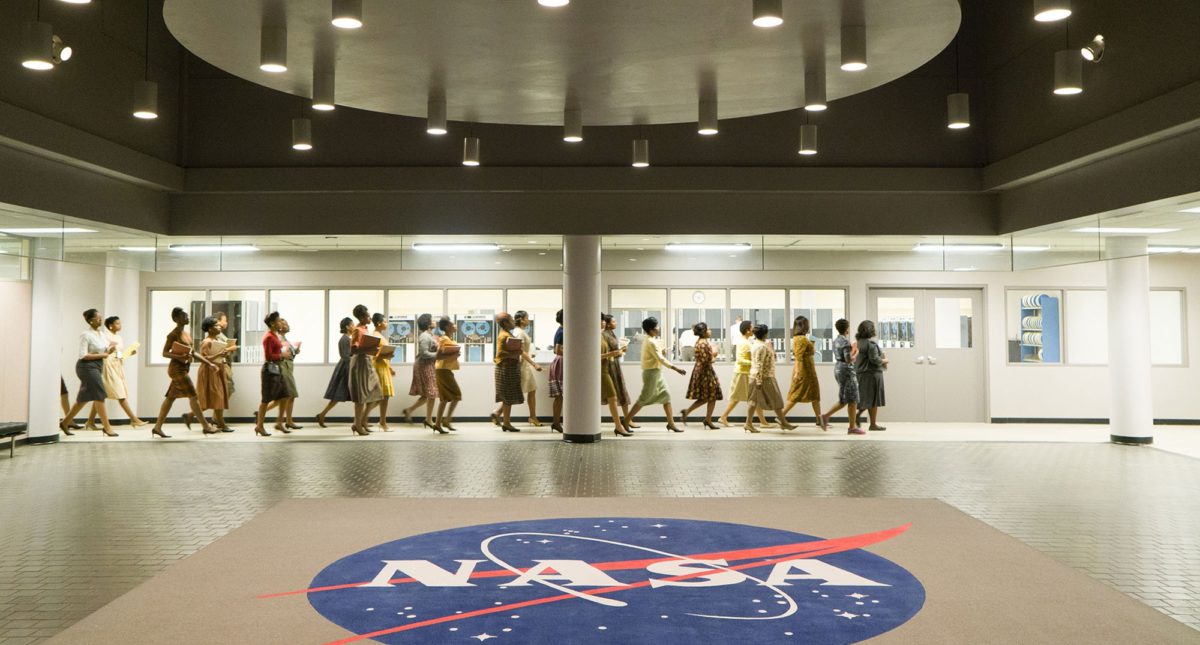Emily Lakdawalla • Jan 10, 2017
Hidden Figures: Triumphant in the theater, sobering after
Go see Hidden Figures, and bring your kids. The movie stars three black women computers at NASA Langley who contributed their talent and brains to making NASA's human space program a success while encountering racist and sexist barriers at every turn. Despite its serious subject matter, the movie is joyful, often funny, and, in the end, triumphant. It's entirely suitable for children; my 10-year-old loved it, and the 7-year-old liked it although her attention wandered toward the end. Along with the other patrons in the theater, my daughters and I applauded repeatedly as the protagonists overcame their obstacles and achieved the impossible together, sending a man to space.
We were all smiles exiting the theater, but the more I reflect on the movie, the more sobered -- and sometimes even enraged -- I feel. How many more smart and creative people are out there who've never had the opportunity to contribute their ideas to the world because the world prejudged them? These aren't just problems of the past. In the 1950s and 1960s, racism and sexism were blatant and open. Officially, segregation is now illegal, as is workplace discrimination. But all you have to do is look at the continuing underrepresentation of minorities and white women in science and technology (the numbers for geology and astronomy are even worse than average) to know that the problems encountered by the protagonists in Hidden Figures have not gone away; they're just, well, hidden. Hidden, at least, to those of us fortunate enough not to have faced those barriers. But racism and sexism (and other -isms) are lurking under the surface. Making us demand proof of greatness before granting opportunities, while giving others chance after chance, rather than looking at everyone and seeing their potential.
There are two scenes that have especially stuck with me. The rest of this post contains spoilers, so I'll post it after the trailer.
In one scene, Space Task Group director Al Harrison (a fictional character played by Kevin Costner) watches along with his group the news coverage of Yuri Gagarin's successful first flight. The mood in the room is dismay, almost despair. He switches off the TV and turns to his engineers, asking them in bafflement: how is it possible that the Russians beat us? What are they doing that we're not doing? The movie never answers these questions, but as the camera pans across his workers, the viewer is reminded that only two of his roughly 30-member team are women, and the only nonwhite person is computer Katherine Goble (later Katherine Johnson, a real person played by Taraji P. Henson). They are silent, but I wanted to scream at the man: if the room has only white men in it, you're only drawing talent from a third of America; and the fantastic talent you have in front of you is treated badly. I can't tell you what Russia was doing, but I can tell you that you're fighting with one hand tied behind your back. Costner's character is blind to it. Henson's character, I assure you, is not.
The other scene that sticks with me is from later in the movie. In an often funny subplot, a brand-new IBM mainframe is being established in a giant room at Langley, but is late and recalcitrant. Recognizing that eventually the IBM will work and she and the other women of the "colored computing" division will be out of a job, actingDorothy Vaughan (another real person, played by Octavia Spencer) teaches herself Fortran, then teaches all her other computers the same skills. Vaughan gets the IBM to work and is offered a job in the IBM lab, but she refuses to accept it without a promotion granting her the rank and salary appropriate to her duties, and a guarantee that the other 20 computers, now programmers, will also be given jobs using their new programming skills on the IBM. The scene of those 20 women walking en masse from their cramped old basement office to the shiny new computation lab is one of the more triumphant scenes in the movie.

For me, that scene is so important. Individually, the three main characters in the movie broke down barriers, and in doing so they provided inspiration and models for the future. But only Vaughan brought 20 other women with her at the moment she broke through. She did it through forward thinking, effectively training her staff, and being very careful about which moments she chose to take professional risk to advocate for herself and others.
In reality, these events were more spread out in time than they are depicted in the movie. But Vaughan is still remembered as being a staunch advocate for all the undervalued women of NACA and NASA, black and white. I'm so glad Hidden Figures has made me learn about these remarkable women, and I encourage everyone to go enjoy it, and then carry on the work to dismantle discriminatory culture and create opportunities for everyone to achieve their potential. I'll try to carry on Dorothy Vaughan's commitment to looking out for everyone who might not be getting a fair chance.
The movie was based on a book by Margot Shetterly; there is also a version for younger readers. As for nonfiction sources, if you'd like to learn more about the black women computers of NACA and NASA, I highly recommend Hidden Human Computers, by Sue Bradford Edwards and Duchess Harris. Hidden Human Computers tells the story of those and many other computers who worked for NACA and NASA from the 1940s to the 1960s, and traces their influence to the present.
Support our core enterprises
Your support powers our mission to explore worlds, find life, and defend Earth. You make all the difference when you make a gift. Give today!
Donate

 Explore Worlds
Explore Worlds Find Life
Find Life Defend Earth
Defend Earth


